Wilhelm Steinitz - Father of Modern Chess
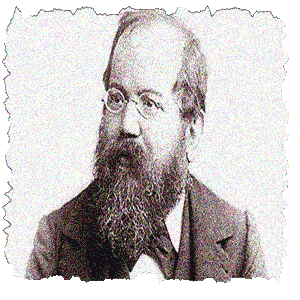
Wilhelm Steinitz
The idea of a World Championship had been around for a long time. Whoever was the best in the world at any point would be hailed as the world champion but there was no official title. Steinitz worked with the American Chess Congress to devise such a championship and set rules and regulations for it. He then won it in 1886 to become the inaugural champion.
He was much more than a champion. He was the first to codify the positional science of chess. The consistent principles of how pieces worked together on the board. It was through the discovery and early development of these concepts that Steinitz became known as the Father of Modern Chess.
Young Wilhelm
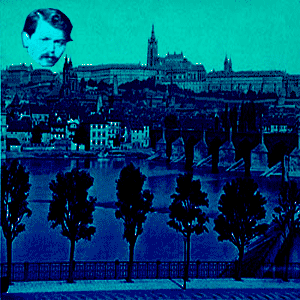
Wilhelm Steinitz grew up in Prague
His father was a hardware retailer and like their neighbors the family had no luxuries. When Steinitz was 12 he learned to play chess from a school friend. Chess was just a childhood pastime at this stage of his life. He would not get serious about it until some years later.
He had designs on a career as a journalist and traveled to Vienna to study maths and pursue his career writing for publications. It was there that his interest in chess was rekindled as he hustled for money in the Viennese cafes.
Cafe Romer
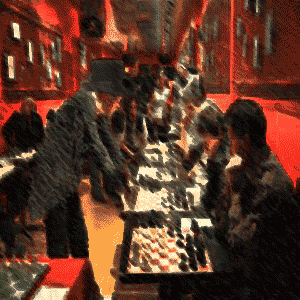
Wilhelm Steinitz moved to the top of the Vienna chess scene at the Cafe Romer
He made his name in the Cafe Romer where he became so strong that he would beat most of his opponents playing blindfolded. He quickly realized that he was one of the best players in Vienna.
In 1859 at the age of 22 he finished in 3rd place in the Vienna Championship. He improved on this to finish first in 1861. He now cast his eye further afield as his confidence in his abilities grew. Europe's strongest players were mostly operating in London at the time. Steinitz decided it was time to move there.
Bright Lights of London

Wilhelm Steinitz defeated Adolf Anderssen
He did himself no disgrace by finishing a highly commendable 6th. He also managed to win the tournament's brilliancy prize with a stunning win over Augustus Mongredien.
Steinitz remained on in London to play against the best players in Britain. Over the next four years he beat them all. Blackburne, Bird, Deacon and anyone else who sat across the board from him. And then there was only one player left for Steinitz to overcome. The legendary German master Adolf Anderssen. They would meet face to face in 1866 to see who was top dog. Steinitz won 8-6 with no draws to become the world's leading player.
New Philosophy
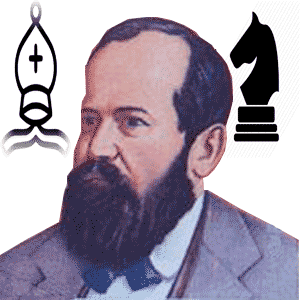
Steinitz introduced the concept of positional chess, pawn structure, how the pieces work together, the roles of bishops and knights in the opening and middlegame
Indeed he was still playing this way when he dethroned Anderssen and continued to do so up until about 1872. One of his last big tournaments playing in this style was his 2nd place finish at Baden-Baden 1870. But the more he played the deeper his appreciation for the very nature of the game became.
It began to occur to him that common principles applied to every game and some deeper strategic ideas with regard to pawn structure and piece positioning would inevitably guarantee better results.
He unveiled his new strategies when winning the Vienna Chess Tournament in 1873. At first his new style though successful, did not go down well.
Ink War

Wilhelm Steinitz became embroiled with his detractors as they attacked each other in their newspaper columns. They denigrated Steinitz and his positional strategies and he did not spare them. The whole episode is referred to as the Ink War
Now they were being confronted with what they saw as a slow, ponderous, careful, defensive style. They were horrified, insulted. They denounced it in their publications, newspapers and magazines as shameful cowardice.
But Steinitz was unperturbed by their concerns. He said things like, "A win by an unsound combination, however showy, fills me with artistic horror". He declared in his column that his new strategies were superior to anything that had gone before.
His results in competition backed this up. He showed that his solid openings would win him slight advantages. He would then patiently build on these advantages until they stealthily became winning advantages later on. His opponents often realized only when it was too late. Eventually he would move to New York where the print media were more sympathetic with his argument.
First World Championship
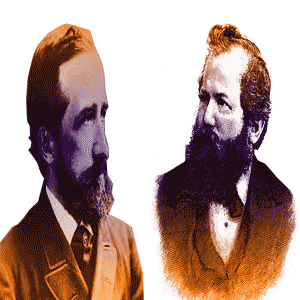
Wilhelm Steinitz beat Johannes Zukertort in 1886 to officially become World Champion
But big time chess competition did not stop and wait. The other players continued to vy for supremacy. New names were always arriving on the scene. Like Mikhail Chigorin, James Mason and Johannes Zukertort. Two of these three would eventually play Steinitz for the world title.
The first of these would be Zukertort who would play Steinitz in the inaugural World Chess Championship. Zukertort had been one of the defenders of the old Romantic style and had poured scorn on Steinitz's modern positional style which would come to be known as the Classical style. When the two styles went head to head in 1886, the Classical Era swept the Romantic Era aside as Steinitz overwhelmed Zukertort 10-5 with 5 draws. Chess had changed forever.
New Challengers
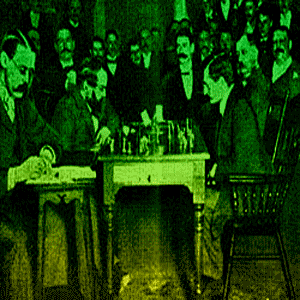
Emanuel Lasker finally dethrones Wilhelm Steinitz
Pillsbury, Marshall, Tarrasch and Lasker were becoming more prominent. And it was Emanuel Lasker who finally ended his dominance, winning the World Championship from him in 1894 by a score of 10 - 5 with 4 draws.
It was a brutal body blow as Steinitz had been sure he would win. After 28 years as the leading player, the last 6 as official World Champion, his time at the top had ended. They played a rematch three years later where Lasker scored a crushing victory, this time 10-2 with 5 draws. It really was over.
Later Life and Death

Final resting place of Wilhelm Steinitz
He married again a couple of years after that and they had two children although less is known about his second family. Being World Champion was a source of great pride to Steinitz and to lose the championship hit him very hard.
He was never the same after the first defeat to Lasker and when the rematch resulted in an even more decisive loss, he began to lose touch with reality. His wife had him committed to Manhattan State Hospital in 1900 after some particularly erratic behavior and he died there on August 12th of that year leaving his young family in poverty.
Legacy of the Father of Modern Chess
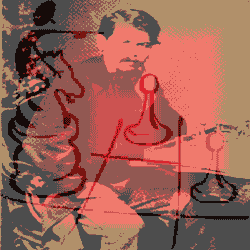
Wilhelm Steinitz introduced positional strategy, his ideas are the foundation of modern chess strategy
"Only the player with the initiative has the right to attack" actually questions the logic of romantic chess in it's entirety. For Steinitz, a player had no business attacking while wide open defensively. His logic was that if one player takes care to shore up his own position first and the other does not, then there can only be one winner.
"When you have an advantage, you are obliged to attack; otherwise you are endangered to lose the advantage" is an expansion on the previous observation. He is saying if you are ahead in development and your position is more solid than your opponent's, you are only handing away the initiative by allowing him time to get back into the game.
Moving On
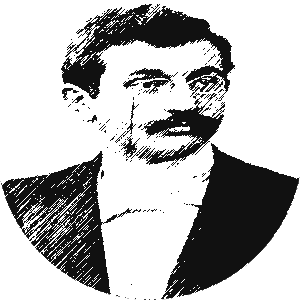
Emanuel Lasker
His eventual removal as the World Champion and his inability to regain it probably pushed him over the edge. He built himself a home-made wireless radio which he worked on and claimed to be using it to telephone some people he knew in Europe!
Never the less he will be remembered for revolutionizing chess. As Garry Kasparov put it: "His teachings became a turning point in chess history: it was from Steinitz that the era of modern chess began". For this he is remembered as the Father of Modern Chess. Next up is the man who ended his reign, Emanuel Lasker.






